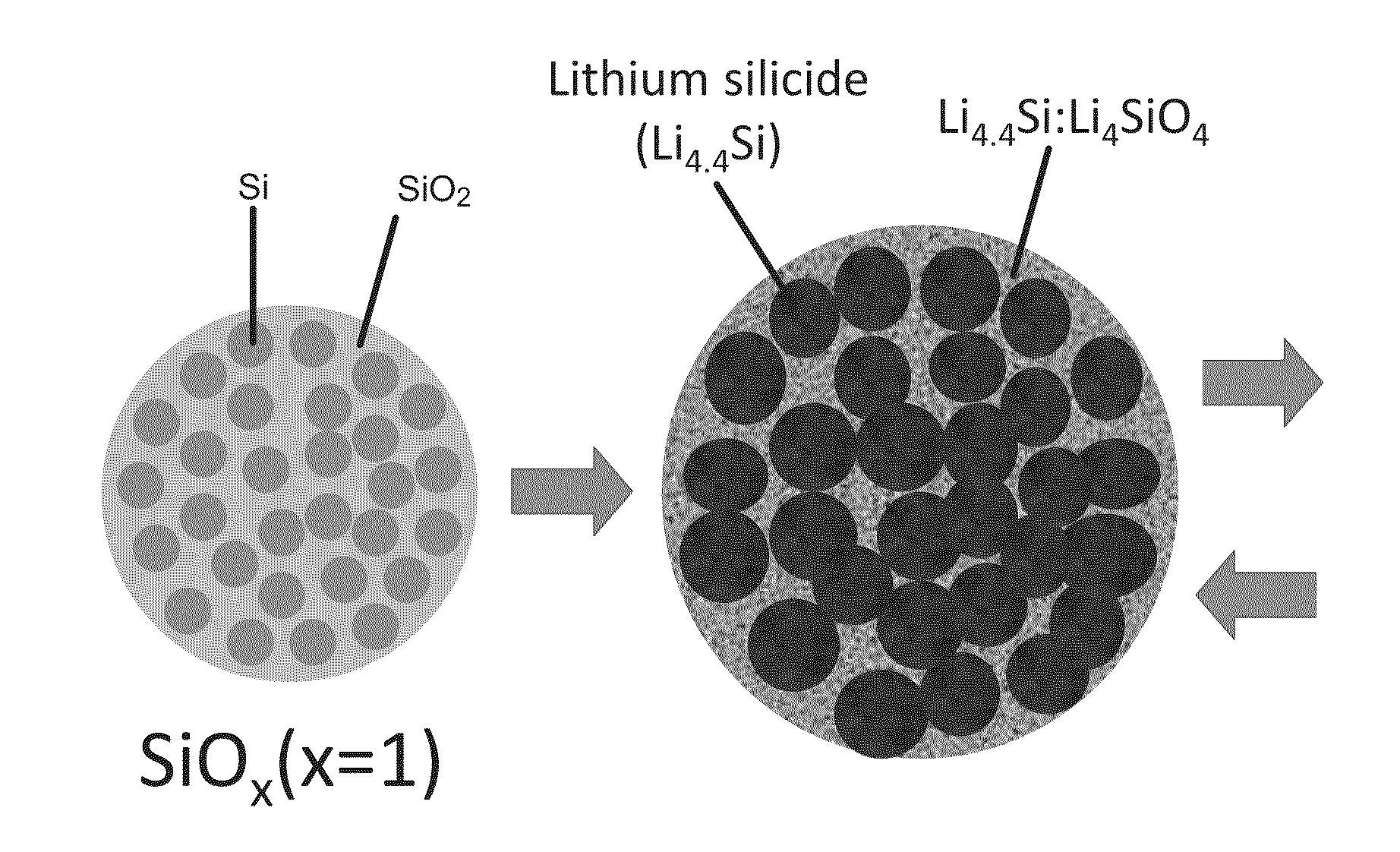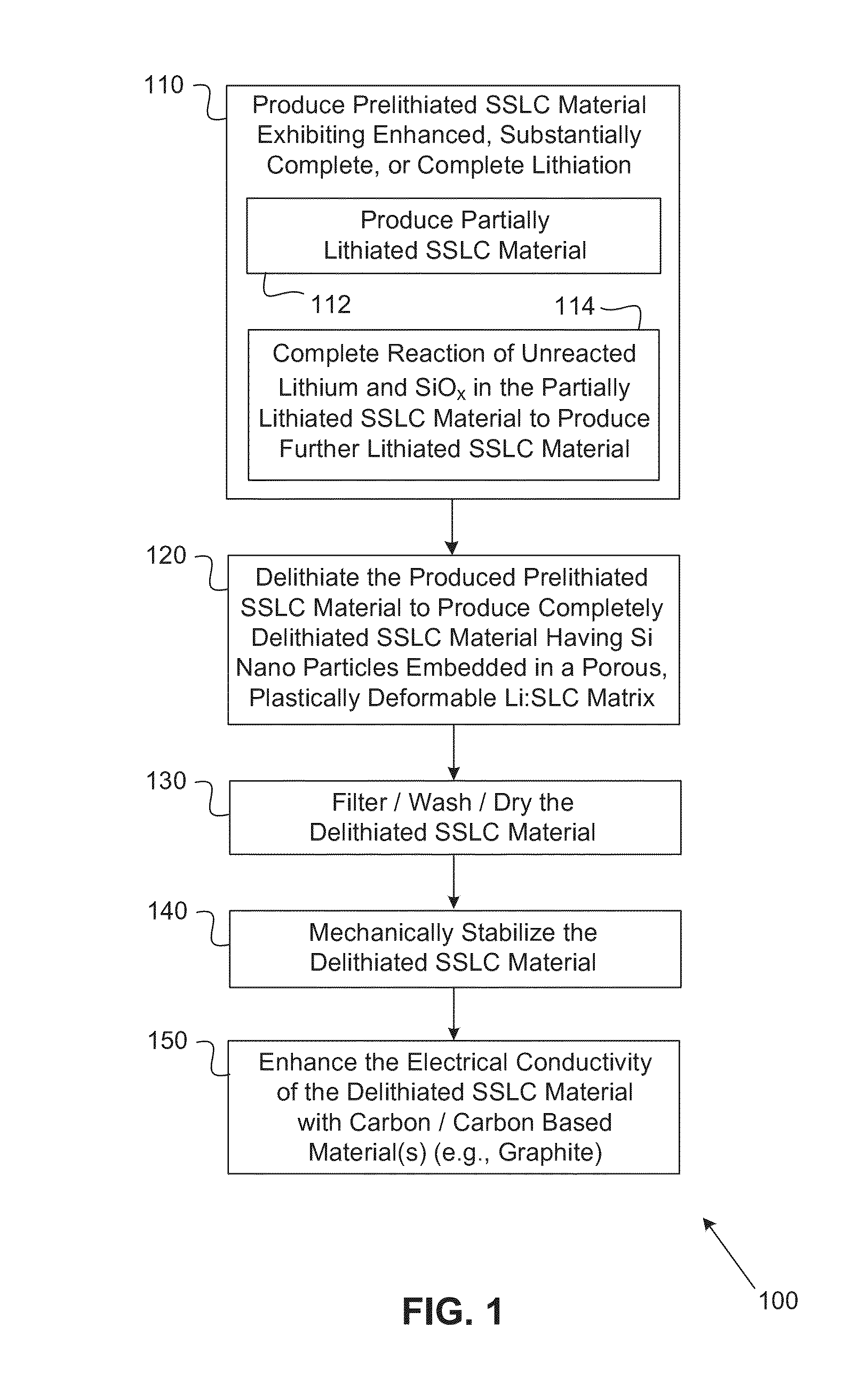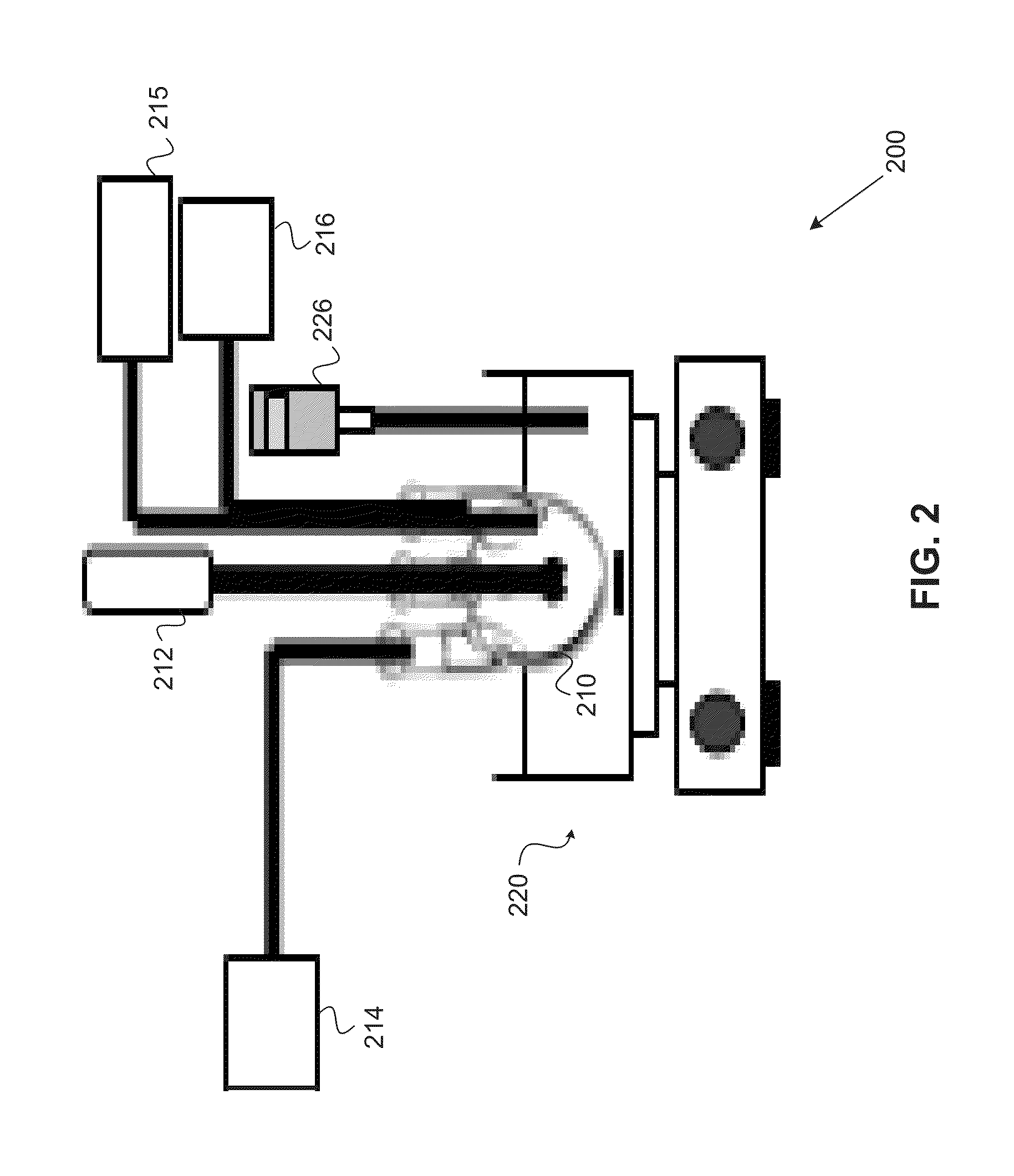Silicon-silicon oxide-lithium composite material having NANO silicon particles embedded in a silicon:silicon lithium silicate composite matrix, and a process for manufacture thereof
a technology of lithium silicate and composite materials, which is applied in the field of silicon-silicon oxidelithium silicate composite materials having nano silicon particles embedded in a silicon, can solve the problems of difficult to achieve complete, uniform prelithiation of siosub>x/sub>by ball milling solid-state materials in the manner disclosed in u.s. patent no. 7,776,473 and achieves the effects of simple, robust, cost-effective and convenient use in battery manufacturing processes
- Summary
- Abstract
- Description
- Claims
- Application Information
AI Technical Summary
Benefits of technology
Problems solved by technology
Method used
Image
Examples
example 2
[0074]A second Example is described hereafter, which is performed in a manner analogous or substantially identical to that described above for Example 1, in a manner readily understood by individuals having ordinary skill in the relevant art in view of the description herein.
[0075]SiOx powder (SiOx, 0.8x particles and graphite powder are ball milled an additional 2 hours, thus producing a SiOx based powder, namely, SiOx / graphite powder intended for prelithiation in accordance with an embodiment of the present disclosure. Next, SLMP® powder (FMC Corporation) is added to the ball mill container, and ball milling for an additional 30 minutes leads to the partial prelithiation of the original SiOx / graphite powder, and the production of a partially prelithiated SSLC material. The partially prelithiated SiOx / graphite powder is next compressed into pellets in a conventional manner, with hexane elimination by filtration or evaporation. The pellets are then immersed in an electrolyte or a mi...
PUM
 Login to View More
Login to View More Abstract
Description
Claims
Application Information
 Login to View More
Login to View More - R&D
- Intellectual Property
- Life Sciences
- Materials
- Tech Scout
- Unparalleled Data Quality
- Higher Quality Content
- 60% Fewer Hallucinations
Browse by: Latest US Patents, China's latest patents, Technical Efficacy Thesaurus, Application Domain, Technology Topic, Popular Technical Reports.
© 2025 PatSnap. All rights reserved.Legal|Privacy policy|Modern Slavery Act Transparency Statement|Sitemap|About US| Contact US: help@patsnap.com



